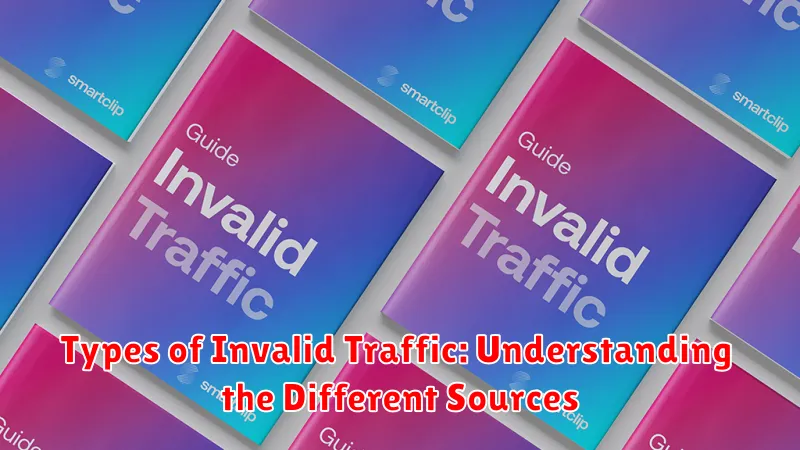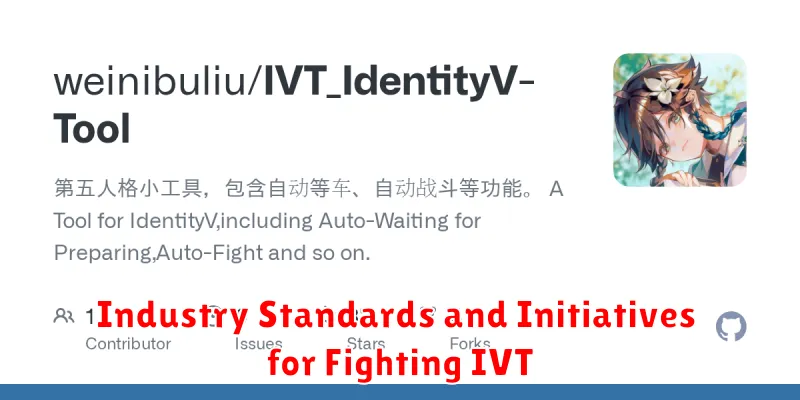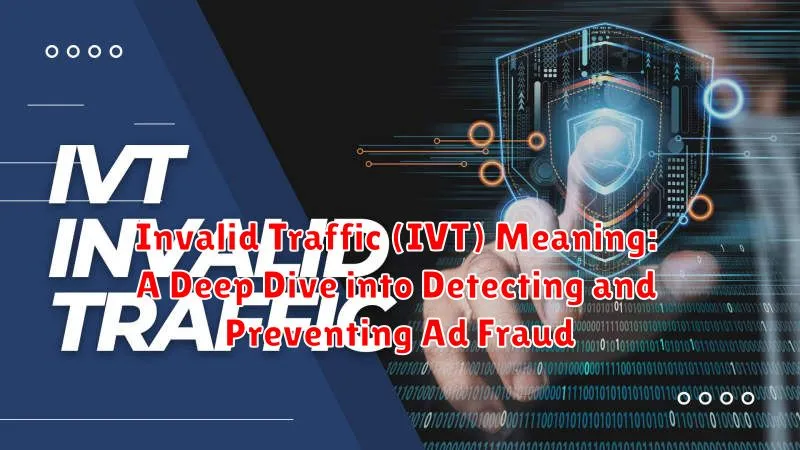In the intricate landscape of digital advertising, ensuring the integrity of ad campaigns is paramount. A significant threat to this integrity is invalid traffic (IVT), a term encompassing various forms of ad fraud. Understanding the IVT meaning is crucial for advertisers and publishers alike, as it directly impacts ROI and the overall effectiveness of online marketing efforts. This article provides a deep dive into the complexities of detecting and preventing ad fraud by dissecting different types of invalid traffic and outlining effective strategies to safeguard your digital advertising investments.
This comprehensive exploration of invalid traffic will cover everything from the basic IVT definition and the common sources of this type of activity to advanced techniques for identifying and mitigating ad fraud. We will discuss the different types of IVT, including general invalid traffic (GIVT) and sophisticated invalid traffic (SIVT), and explore the technological solutions available to combat these threats. By understanding the nuances of invalid traffic, you can make informed decisions to protect your advertising budget and maximize the impact of your campaigns, ultimately leading to better marketing outcomes.
What is Invalid Traffic (IVT) and Why Does It Matter?
Invalid Traffic (IVT) refers to any digital advertising activity that does not originate from genuine human users with a real interest in the advertised product or service. It encompasses both fraudulent and non-fraudulent traffic that can negatively impact campaign performance.
Why does IVT matter? It directly affects advertising ROI by wasting budget on impressions and clicks that will not lead to conversions. This can significantly skew campaign data, making it difficult to accurately assess performance and optimize strategies. IVT also damages the credibility of the advertising ecosystem.
Essentially, IVT represents a significant challenge to the effectiveness and efficiency of digital advertising, necessitating robust detection and prevention strategies.
Types of Invalid Traffic: Understanding the Different Sources

Invalid traffic (IVT) isn’t monolithic. It stems from various sources, each requiring a unique approach for detection and mitigation.
We can broadly categorize IVT into two main types:
- General Invalid Traffic (GIVT): This is easier to detect and filter. It includes traffic from known sources, such as bots, crawlers, and spiders identified by the IAB/ABC International Spiders & Bots List. It also includes data center traffic.
- Sophisticated Invalid Traffic (SIVT): This is more challenging to identify as it often mimics genuine user behavior. SIVT involves techniques like ad stacking, pixel stuffing, click injection, click farms, and malware-infected devices.
Understanding these different types of IVT is crucial for developing effective strategies to protect your advertising campaigns and ensure accurate measurement of performance.
The Impact of IVT on Advertising Campaigns and Budgets
Invalid traffic (IVT) significantly undermines the effectiveness of advertising campaigns and leads to a substantial waste of advertising budgets. By inflating traffic metrics, IVT creates a false impression of campaign performance, leading to skewed data and misinformed decisions.
Here’s a breakdown of the impact:
- Wasted Ad Spend: Budgets are spent on serving ads to bots or fraudulent users, resulting in zero return on investment.
- Inaccurate Data: IVT distorts key performance indicators (KPIs) such as click-through rates (CTR), conversion rates, and bounce rates, making it difficult to accurately assess campaign performance.
- Compromised Brand Safety: Ads may be displayed on undesirable or inappropriate websites if IVT originates from these sources.
- Reduced ROI: The overall return on investment (ROI) of advertising campaigns is diminished due to the lack of genuine engagement and conversions.
The financial consequences of IVT can be substantial, requiring advertisers to implement robust detection and prevention measures to protect their investments.
How to Detect Invalid Traffic: Common Methods and Techniques
Detecting invalid traffic (IVT) requires a multi-faceted approach, combining various methods and techniques to identify suspicious activities.
Common Detection Methods
- IP Address Analysis: Identifying and blocking known sources of fraudulent traffic by analyzing IP addresses and their geolocation.
- User Agent Analysis: Examining user agent strings to detect inconsistencies or bot-like behavior.
- Click-Through Rate (CTR) Monitoring: Identifying abnormally high or low CTRs, which may indicate bot activity or click farms.
- Conversion Rate Analysis: Monitoring conversion rates to identify discrepancies between clicks and actual conversions.
- Time on Site Metrics: Detecting unusually short or long session durations, which can be indicative of non-human traffic.
- Cookie Analysis: Investigating cookie data to identify patterns associated with fraudulent activities.
Advanced Techniques
In addition to the above methods, more sophisticated techniques like machine learning algorithms are used to analyze user behavior and identify subtle patterns indicative of IVT. These algorithms can detect anomalies that may not be apparent through traditional methods.
Proactive Measures for Preventing Invalid Traffic in Your Campaigns
Implementing proactive measures is crucial for minimizing invalid traffic (IVT) before it impacts your advertising campaigns. These strategies focus on preventing IVT from occurring in the first place, saving time and resources.
Key Proactive Strategies:
- Whitelisting: Focus your ad spend on reputable publishers and domains with a proven track record of clean traffic.
- Audience Targeting Refinement: Implement precise targeting parameters to minimize exposure to bot networks and fraudulent users. Utilize demographic, geographic, and behavioral data effectively.
- Ad Placement Monitoring: Regularly monitor ad placements to ensure they are appearing in appropriate contexts and not on suspicious websites.
- Utilize Pre-Bid Filtering: Implement solutions that analyze traffic data in real-time and block suspicious impressions before they are served.
- Implement CAPTCHA: Use CAPTCHA to verify human users
By implementing these proactive measures, advertisers can significantly reduce their exposure to IVT and improve the overall effectiveness of their advertising campaigns.
The Role of Verification Tools in Combating IVT
Verification tools play a crucial role in the fight against invalid traffic (IVT). These tools provide advertisers with the necessary insights to identify and mitigate fraudulent activities affecting their campaigns. By analyzing various data points, verification platforms can distinguish between genuine user engagement and bot-driven or malicious traffic.
Here’s a breakdown of how these tools contribute:
- Real-time Monitoring: Continuously monitor traffic sources and user behavior to detect anomalies.
- Data Analysis: Analyze IP addresses, user agents, and other parameters to identify suspicious patterns.
- Reporting and Analytics: Provide detailed reports on IVT levels, sources, and impact on campaign performance.
- Pre-bid Filtering: Block suspected IVT sources before ad impressions are served.
By leveraging these capabilities, verification tools empower advertisers to protect their budgets, improve campaign performance, and ensure that their ads are seen by real, engaged users. Ad fraud prevention is heavily reliant on the proper use of these technologies.
Working with Partners to Minimize Invalid Traffic
Combating invalid traffic (IVT) requires a collaborative effort. No single entity can completely eliminate ad fraud on its own. Therefore, establishing clear communication and expectations with all partners in the advertising ecosystem is critical.
This includes:
- Advertisers: Demanding transparency and verification from publishers and ad networks.
- Publishers: Implementing rigorous internal controls and vetting traffic sources.
- Ad Networks/Exchanges: Utilizing IVT detection technologies and enforcing strict quality standards.
- Technology Vendors: Providing accurate and reliable verification solutions.
Due diligence is essential. Before engaging with a new partner, assess their IVT mitigation strategies. Request documentation of their processes and inquire about their track record in combating ad fraud. Regular audits and performance reviews can also help ensure continued compliance and effectiveness.
Industry Standards and Initiatives for Fighting IVT

The advertising industry has established several standards and initiatives to combat invalid traffic (IVT) and promote transparency. These efforts aim to provide a framework for detection, prevention, and reporting of ad fraud.
Key organizations involved include the Media Rating Council (MRC), which sets accreditation standards for IVT detection vendors. Accreditation signifies that a vendor’s methodology meets rigorous industry benchmarks. The Interactive Advertising Bureau (IAB) also plays a crucial role by developing standards and guidelines, such as the Ads.txt and App-ads.txt initiatives, which help prevent unauthorized inventory spoofing.
These standards and initiatives are continuously evolving to address new forms of IVT and ensure the integrity of the digital advertising ecosystem. Adherence to these guidelines is vital for advertisers, publishers, and ad tech vendors committed to reducing ad fraud.
The Future of IVT Detection and Prevention
The landscape of invalid traffic (IVT) detection and prevention is constantly evolving, driven by advancements in technology and the increasing sophistication of fraudulent actors. Expect to see a greater reliance on machine learning and artificial intelligence (AI) to identify complex patterns indicative of IVT that are undetectable by traditional methods.
Enhanced data analysis techniques, including more granular user behavior analysis and device fingerprinting, will play a crucial role in distinguishing legitimate traffic from fraudulent activity.
Furthermore, there will be a stronger emphasis on real-time IVT detection and prevention, allowing advertisers to mitigate the impact of fraudulent traffic before it significantly affects campaign performance.
Collaboration and data sharing among industry stakeholders, including ad platforms, verification vendors, and advertisers, will become increasingly important in creating a comprehensive and effective approach to combating IVT.

